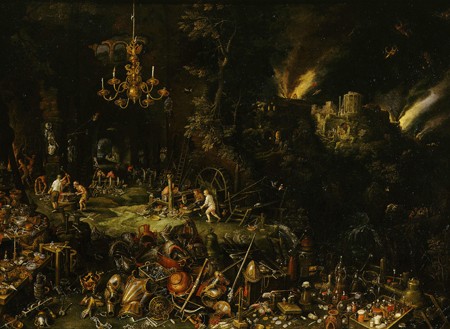Thanks to its dominant position in Portugal’s sea trade, at the beginning of the sixteenth century Antwerp developed into an international hub of knowledge and commerce. Using the rhetoric of novelty, encomia of the city underscored Antwerp’s interconnectedness with the world (
Using such eulogies as a point of departure, my book addresses two interrelated sets of questions. First, I investigate imagery that made reference to the idea of Antwerp as a storehouse where goods from all parts of the world were accumulated, traded, and collected. Circulated in European centers of art and exported to overseas markets, these images presented the city as the site of a new collecting culture that embraced old and new worlds and embodied both intellectual curiosity and commercial interests—the new virtues of a globalizing world. Second, I explore how the collecting activities of artists, merchants, and members of the learned elite linked urban spaces with the new maritime and world spaces that Portuguese merchants had helped create and shape. Third, I consider the ways in which Antwerp’s visual arts positioned themselves in relation to other arts and fields of knowledge, both poetry (painting’s traditional sister art) and the newer arts grounded in geometry and mathematics, on the one hand, and medicine and alchemy, on the other.
I am particularly interested in visual representations of spatial environments and physical settings that make reference to the accumulation both of learning and knowledge and of riches and material goods. Among other topics, my project focuses on the following three iconographies and themes.
First, linked with alchemy, the theme of Vulcan’s forge provided an arena where the space of production and the space of display were combined. In the widely disseminated Le
Second, most scholarly literature has overlooked the fact that depictions of the five senses in northern art frequently include instruments and mechanisms for the artificial stimulation of the senses—thus
Finally, as suggested by the earliest responses from both artists and writers to the art of Hieronymus Bosch (c. 1450–1516), the images of a continuously metamorphosing nature created by Bosch and his numerous followers may also represent the interior spaces of the artist’s mind. The unprecedented response to Bosch’s art in the decades after his death thus also resonate with period ideas of laboratories of the mind. It is on the basis of these examples and considerations that I hope to shed new light on representations of spaces in which the transformative powers of nature, of various “sciences” and arts, and of the artist’s imagination merge.
